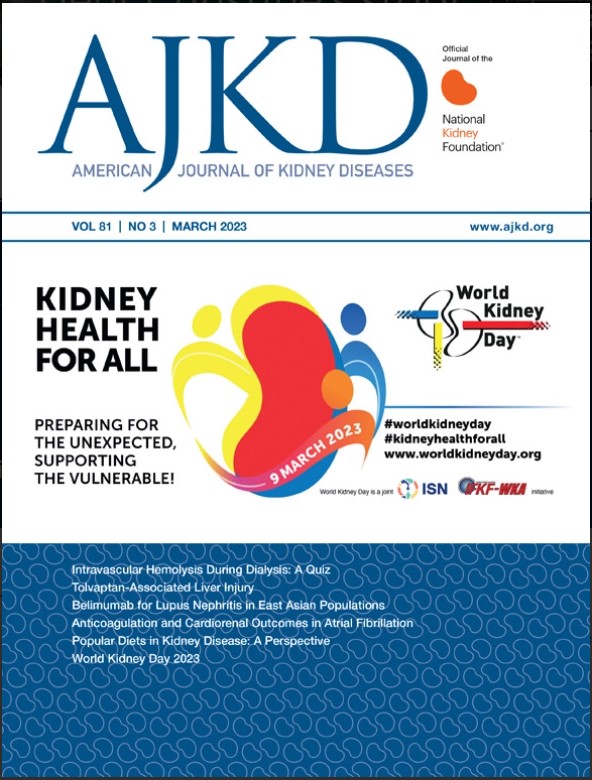免疫荧光和电子显微镜在基因工程猪到人肾异种移植中的应用:一例报告。
IF 8.2
1区 医学
Q1 UROLOGY & NEPHROLOGY
引用次数: 0
摘要
基因工程(GE)猪肾异种移植最近被用于猪到人脑死亡死者的异种移植。然而,免疫荧光(IF)和电子显微镜(EM)发现的异种移植物还没有完全描述。在这里,我们报告了在我们机构进行的三例猪到人脑死亡的异种移植中,10种基因修饰(10GE)异种移植的转基因猪的新的IF和EM特征与临床相关性。植入前活检出人意料地在所有三个异种移植物中显示临床沉默的系膜免疫复合物沉积,表明猪供体相关过程。此外,EM显示在没有内皮细胞损伤的情况下足细胞足突完整;在供体猪没有血尿的情况下,肾小球基底膜相对于成人肾小球薄,可能反映了正常猪的解剖结构。在肾病范围蛋白尿的第三例死者中,足突消退与蛋白尿的严重程度无关。我们相信,这些在10GE猪肾异种移植中的发现可以作为正常异种移植形态学的参考,有助于建立异种移植排斥标准,并支持真正需要进行I期临床试验,以充分了解这些发现的长期临床意义。本文章由计算机程序翻译,如有差异,请以英文原文为准。
Immunofluorescence and Electron Microscopy in Genetically Engineered Pig-to-Human Kidney Xenotransplantation: A Case Report
Genetically engineered (GE) porcine kidney xenografts have been used recently in pig-to-human brain-dead decedent xenotransplantation. However, immunofluorescence (IF) and electron microscopy (EM) findings of xenografts have not been fully described. Here we report novel IF and EM features of GE pigs with 10 genetic modifications (10GE) xenografts with clinical correlation in 3 cases of pig-to-human brain-dead decedent xenotransplantation, performed at our institution. Preimplant biopsies unexpectedly demonstrated clinically silent mesangial immune complex deposits in all 3 xenografts, indicating porcine donor–related process. In addition, EM showed intact podocyte foot processes in the absence of endothelial cell injury, and thin glomerular basement membrane relative to adult human glomeruli in the absence of hematuria in donor pigs, likely reflecting normal porcine anatomy. In a third decedent with nephrotic-range proteinuria, foot process effacement did not correlate with the severity of proteinuria. We believe that these findings in 10GE porcine kidney xenografts may serve as a reference for normal xenograft morphology, contribute to establish xenograft rejection criteria, and support genuine need for phase I clinical trials to fully understand the long-term clinical implications of these findings.
求助全文
通过发布文献求助,成功后即可免费获取论文全文。
去求助
来源期刊

American Journal of Kidney Diseases
医学-泌尿学与肾脏学
CiteScore
20.40
自引率
2.30%
发文量
732
审稿时长
3-8 weeks
期刊介绍:
The American Journal of Kidney Diseases (AJKD), the National Kidney Foundation's official journal, is globally recognized for its leadership in clinical nephrology content. Monthly, AJKD publishes original investigations on kidney diseases, hypertension, dialysis therapies, and kidney transplantation. Rigorous peer-review, statistical scrutiny, and a structured format characterize the publication process. Each issue includes case reports unveiling new diseases and potential therapeutic strategies.
 求助内容:
求助内容: 应助结果提醒方式:
应助结果提醒方式:


